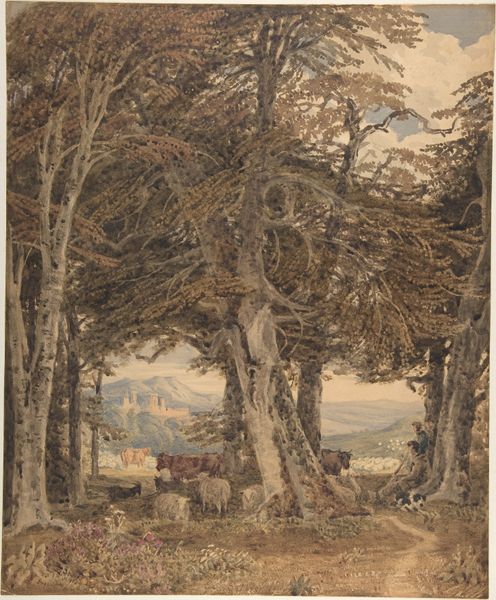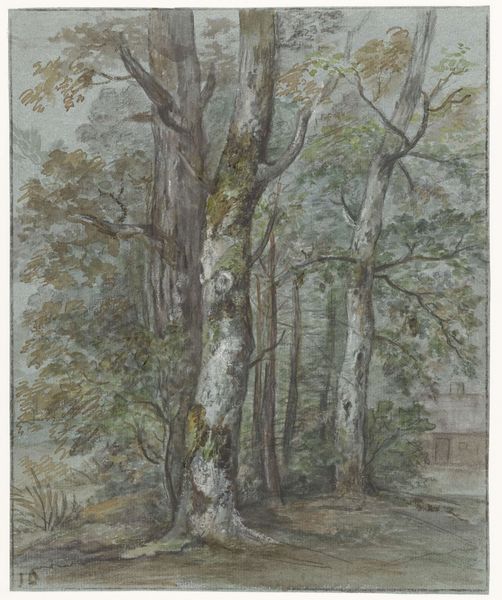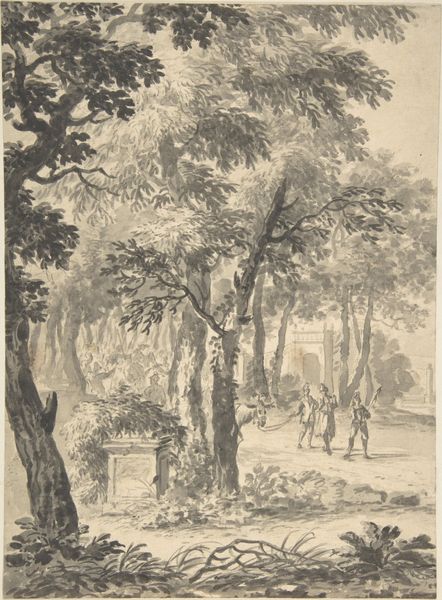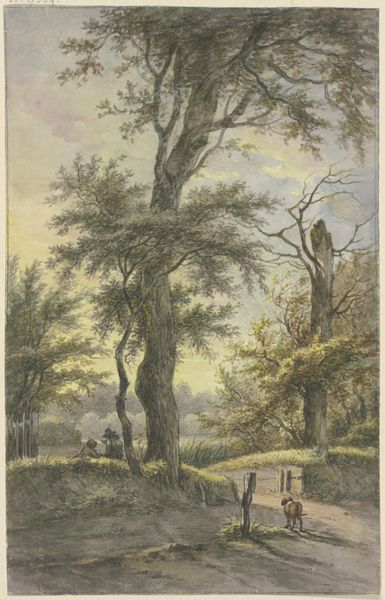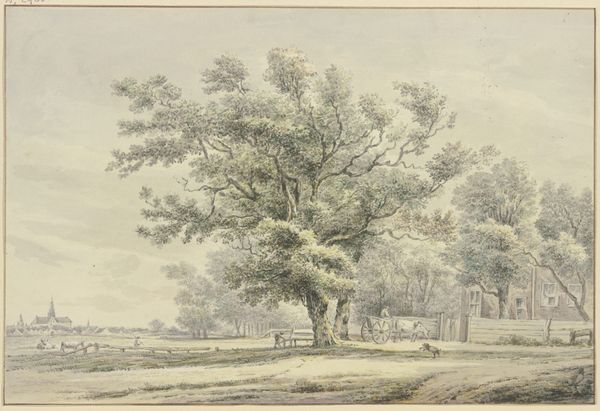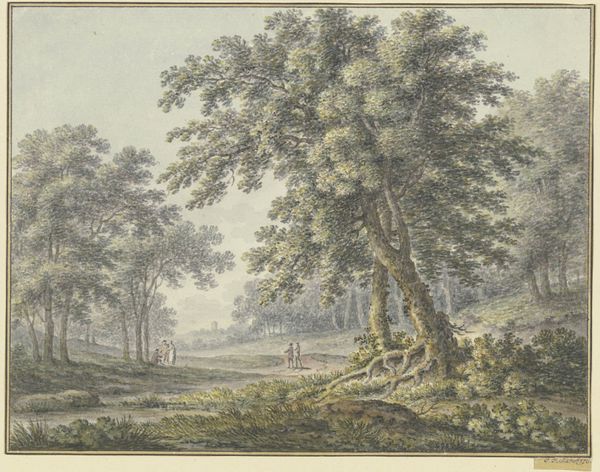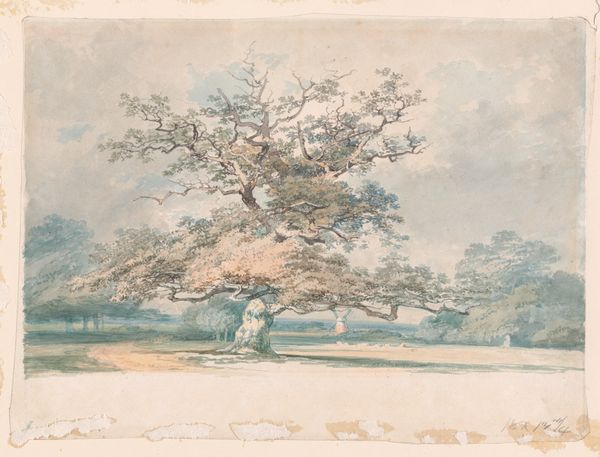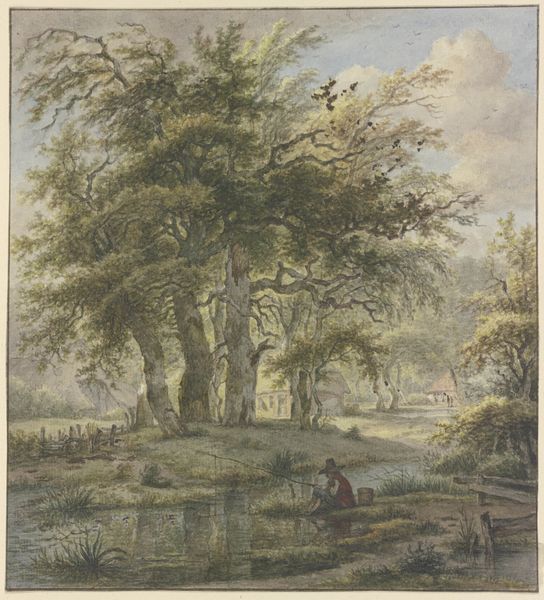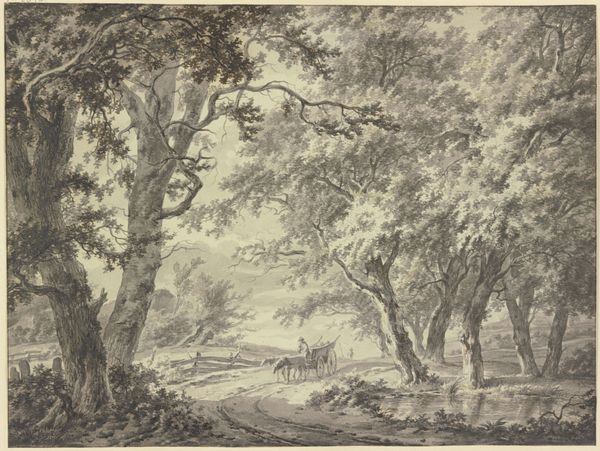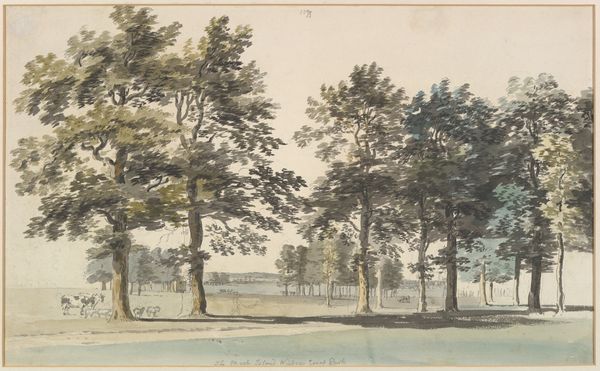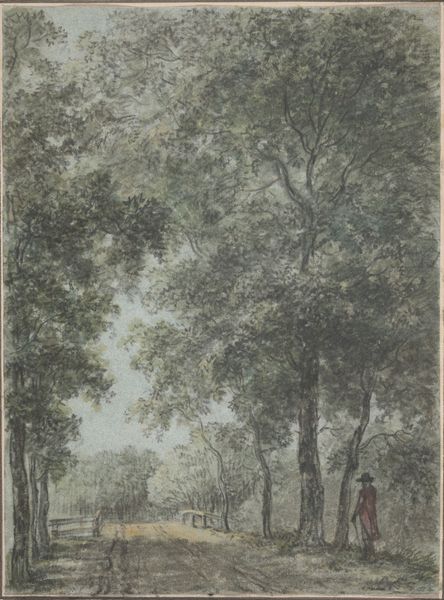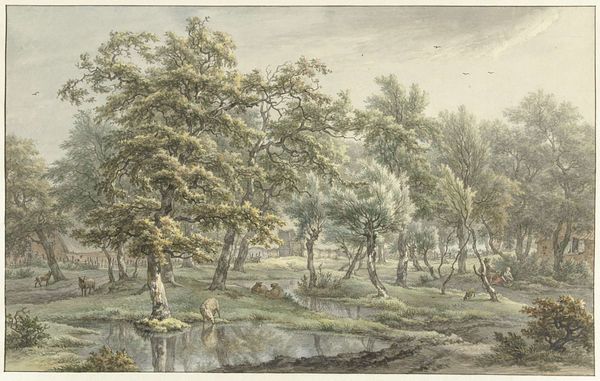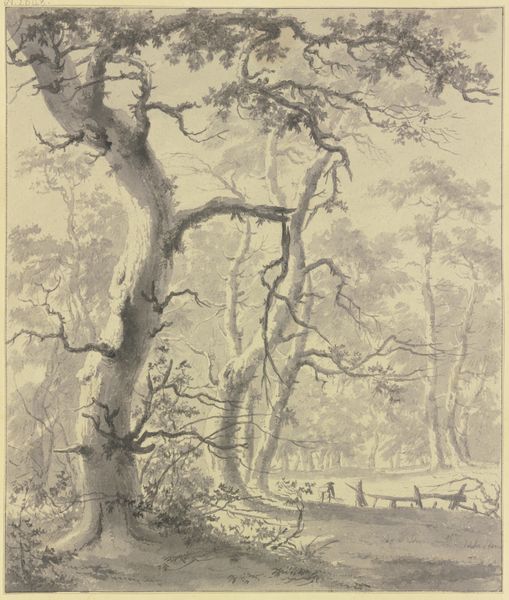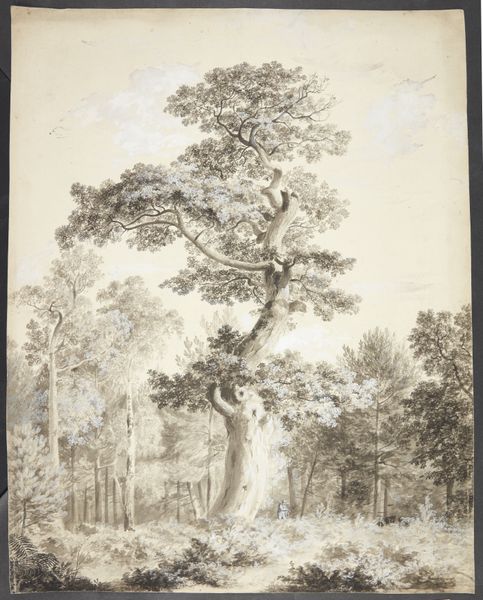
drawing, print, plein-air, watercolor
#
tree
#
landscape illustration sketch
#
drawing
#
toned paper
#
water colours
# print
#
plein-air
#
landscape
#
handmade artwork painting
#
watercolor
#
coloured pencil
#
romanticism
#
watercolour illustration
Dimensions: Sheet: 7 1/2 × 6 5/16 in. (19 × 16 cm)
Copyright: Public Domain
Curator: Gazing at Thomas Girtin's "Deer in Windsor Forest," dating back to 1793-94 and currently residing at The Met, it strikes me as a vision caught between the pastoral ideal and something a touch melancholy. What’s your first impression? Editor: Intimate, more than anything. I feel like I've stumbled upon a secret meeting between the deer and the ancient trees, all painted with such tenderness in these earthy watercolours on toned paper. A very Romantic notion, indeed! Curator: Precisely! Windsor Forest held particular resonance within the context of late 18th-century Britain. It represented the Crown’s domain, historically used for hunting and symbolic power, yet by Girtin's time, it was becoming more appreciated for its natural beauty. The sublime, if you will. Editor: So it's interesting that Girtin zeroes in on these docile deer. There is the one fawn peeking out shyly from behind that gnarly tree, and a deer resting. Do you think they serve to sort of domesticate this "Crown domain" somehow? Make it more approachable? Curator: In a way, yes. While Girtin would have been influenced by the picturesque movement which sought to tame the wilderness through aesthetic framing, his almost casual arrangement of these common deer suggests a softened view of nature and royal ownership, perhaps. This watercolour was painted en plein-air. Editor: And what do you mean by softened view? It almost looks as if it is washed in a blue filter that emphasizes that delicate state. A meditation on time. Curator: The choice of watercolor definitely contributes to this sensibility. The Romantic movement tended towards glorifying not just landscape but inner emotional states. Watercolours offer themselves nicely for this. He masterfully controls the washes, allowing the paper's tone to subtly emerge from beneath. There's no harshness, just the muted beauty of a lived-in landscape. Editor: Girtin asks us to observe this place that is being lived in, yes. To consider what a world might look like outside of royal ownership, to the value of the common that is now hidden. What I think is so compelling about Girtin is his gentle way of suggesting rather than overtly proclaiming. Curator: That subtle suggestion, I think, is what allows this image to linger in the mind. It's not just a depiction of deer in a forest. Editor: No, it whispers of deeper connections— between humanity and nature, between the present and the past, and ultimately, between the artist and the viewer. A subtle little moment of shared observation in a grand, historic forest.
Comments
No comments
Be the first to comment and join the conversation on the ultimate creative platform.
